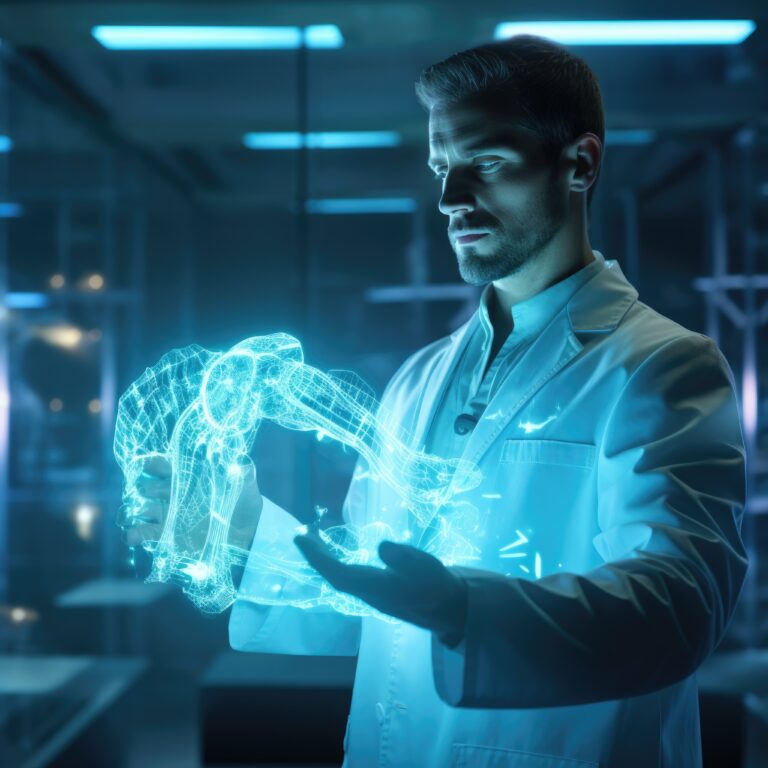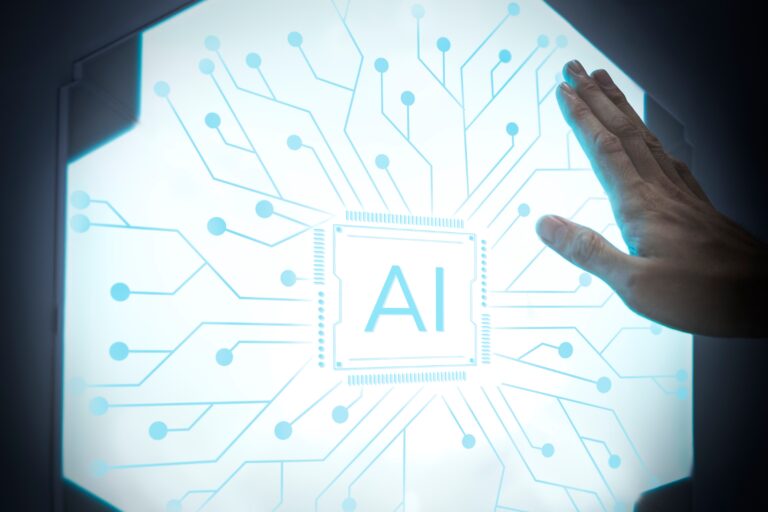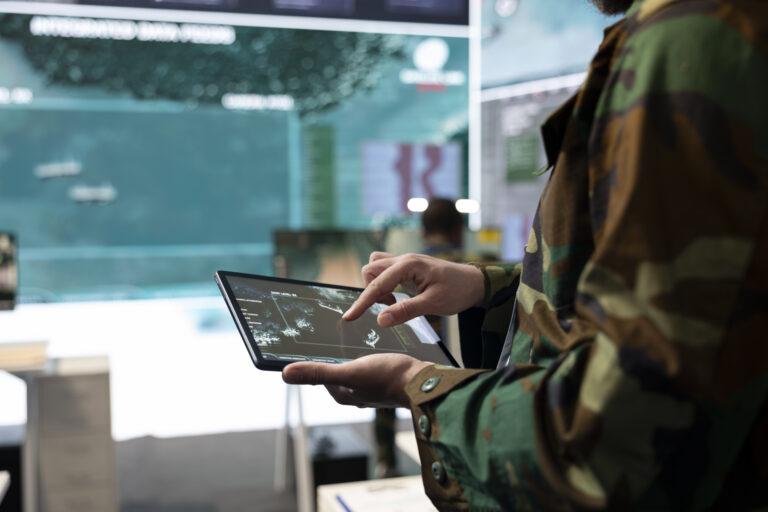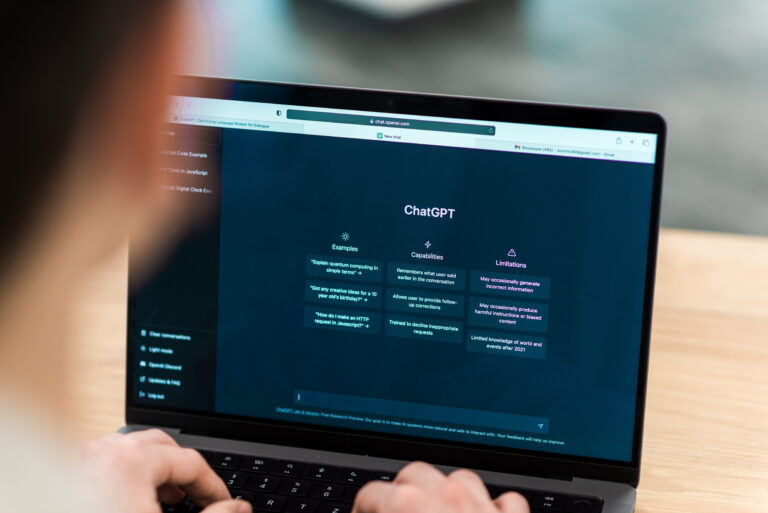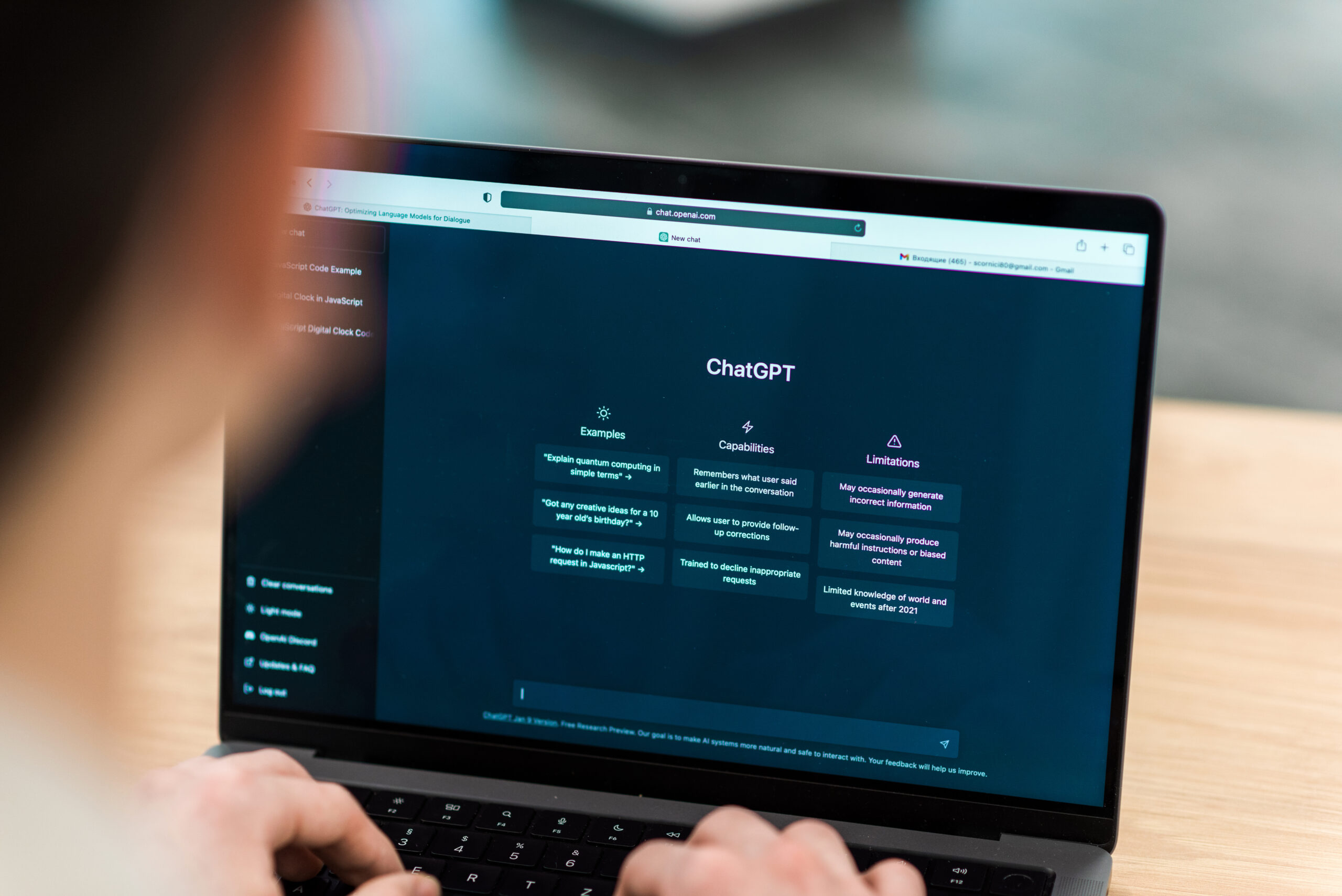
Close view of a man with opened AI chat on laptop
Introduction
The arrival of ChatGPT and similar artificial intelligence tools has radically changed the way students learn, write, and access information. What once required hours of research or reflection can now be done in seconds with a simple prompt.
While this innovation offers incredible opportunities for education, it also raises fundamental questions: Are students learning more efficiently, or are they becoming overly dependent on technology that thinks for them?
The debate over whether ChatGPT is a revolutionary learning assistant or a potential academic trap has become one of the most significant educational discussions of our time.
What Is ChatGPT and How Does It Work?
Developed by OpenAI, ChatGPT is a large language model trained to generate human-like responses to text prompts. It can explain complex concepts, summarize articles, compose essays, and even simulate conversations or problem-solving processes.
This capability has made it a powerful tool in education — teachers use it to create exercises, and students use it for everything from clarifying doubts to generating full assignments.
However, this accessibility has a double edge. While it can democratize access to knowledge, it can also encourage academic shortcuts, making students less likely to engage critically with learning material.
The Benefits of AI in Education
From a positive standpoint, ChatGPT represents one of the greatest educational aids ever created. It allows personalized, on-demand tutoring, something traditional classrooms often cannot provide.
For instance, a student struggling with math can ask ChatGPT to explain a concept multiple times, in different ways, until they truly understand it. Similarly, students with learning difficulties or language barriers can use AI to adapt explanations to their needs and pace.
According to a 2024 report from the OECD, over 60% of educators who integrated AI tools into their classrooms reported higher student engagement and improved understanding of complex subjects.
In this sense, ChatGPT acts as an educational equalizer, making high-quality support accessible to anyone with an internet connection.
The Risks: Dependence and Superficial Learning
Despite its potential, the use of ChatGPT in education also presents real dangers.
One of the main concerns is cognitive dependence — the tendency for students to rely on the model to think, write, and solve problems for them. Instead of learning through effort and reflection, many may opt for instant results, skipping the intellectual process that leads to deep understanding.
A 2023 study by Stanford University found that students who used AI to write essays showed lower levels of information retention and critical thinking in follow-up evaluations compared to those who worked manually.
This doesn’t mean ChatGPT is harmful by nature, but rather that how it’s used determines its educational value. Like a calculator, it can be an instrument of empowerment — or of intellectual laziness.
Academic Integrity and Plagiarism Concerns
Another issue closely tied to ChatGPT’s rise is academic integrity.
Since AI can generate essays, solve mathematical problems, and even mimic a student’s writing style, identifying plagiarism becomes increasingly difficult. Universities around the world have begun to adapt their assessment systems to detect AI-generated content.
In 2024, Turnitin, one of the leading plagiarism detection platforms, launched an AI detection feature after reports that over 30% of submitted essays contained portions written with ChatGPT or similar tools.
This phenomenon has forced educators to rethink how learning is evaluated. Traditional exams and essays may no longer be enough to measure true understanding. Instead, oral assessments, in-person projects, and critical discussions are becoming more common.
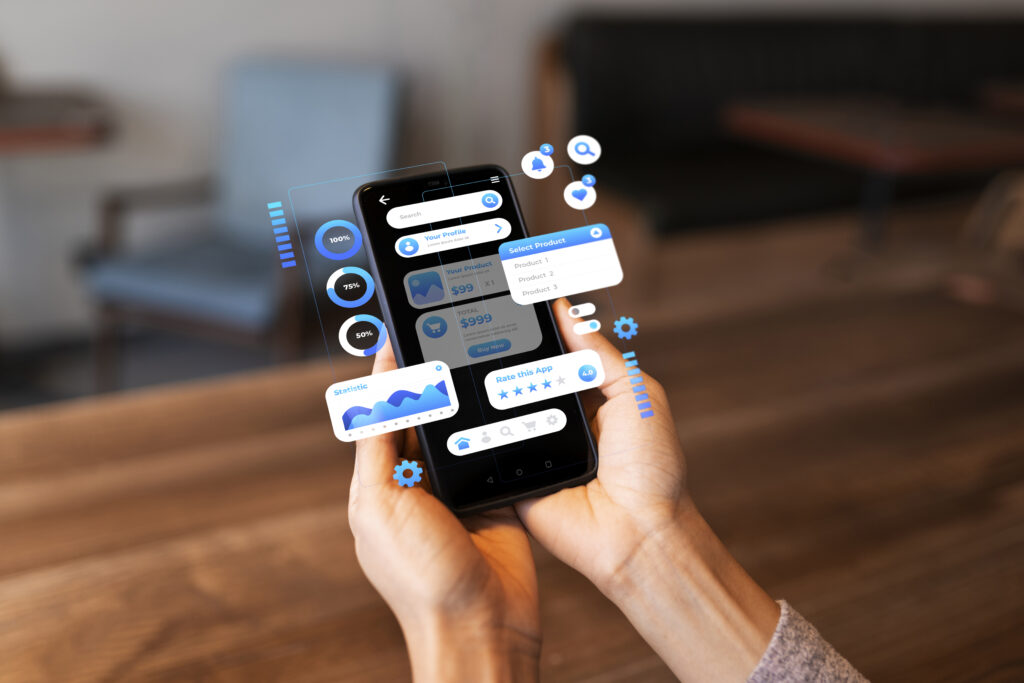
A New Role for Teachers
Far from being replaced, teachers are taking on a transformative new role in this AI-driven educational landscape.
Their mission is no longer limited to transmitting information — something AI does exceptionally well — but rather to teach students how to think critically, evaluate sources, and use AI responsibly.
Educators are now becoming mentors in digital literacy, helping students understand the ethical and intellectual boundaries of these tools. The goal is not to prohibit AI, but to integrate it as a complement to human reasoning, creativity, and moral judgment.
As the UNESCO 2024 Education Report states, “AI cannot replace the empathy, intuition, and ethical responsibility of a teacher — but it can amplify their ability to teach.”
The Psychological Side: Learning Without Effort
There’s also a psychological dimension to consider. The constant availability of AI-generated answers can condition students to expect instant gratification, reducing patience and curiosity — both essential traits in learning.
According to a study by the University of Cambridge, students who frequently used AI tools reported higher frustration levels when facing problems without automated help. Over time, this could foster mental laziness, where creativity and problem-solving skills decline.
Education experts warn that if students no longer experience the challenge of building knowledge through trial and error, their capacity for resilience and independent thinking could weaken.
Opportunities for Responsible Integration
The challenge, then, is not to eliminate ChatGPT from education, but to define responsible and balanced use.
Some schools are already taking innovative approaches. For example, certain European institutions have implemented AI literacy modules, teaching students how models like ChatGPT work, their biases, and how to use them ethically.
Used correctly, ChatGPT can become a powerful assistant for brainstorming ideas, improving writing, and clarifying complex subjects — as long as students remain actively engaged in the learning process.
Teachers, for their part, can use AI to design adaptive learning materials, provide individualized feedback, and even save time on administrative tasks — all of which can improve the educational experience as a whole.
The Future of AI in Education
Looking ahead, the relationship between ChatGPT and education will likely evolve toward collaboration rather than competition.
AI systems are expected to become more context-aware and specialized, allowing them to tailor explanations according to age, knowledge level, and cultural background. At the same time, educators will increasingly need to cultivate critical thinking, creativity, and ethical reasoning — skills that no AI can replicate.
The goal is not to resist technological change, but to ensure that it serves human development rather than replacing it.
Conclusion
ChatGPT is neither a miracle nor a menace — it’s a mirror. It reflects how society, educators, and students choose to engage with technology.
When used consciously, it can democratize education, inspire curiosity, and foster a deeper love for learning. But when abused or misunderstood, it risks turning knowledge into a mechanical process devoid of reflection.
The key lies in balance. ChatGPT should be viewed not as a substitute for thinking, but as a catalyst for it — a bridge between artificial intelligence and genuine human wisdom.
